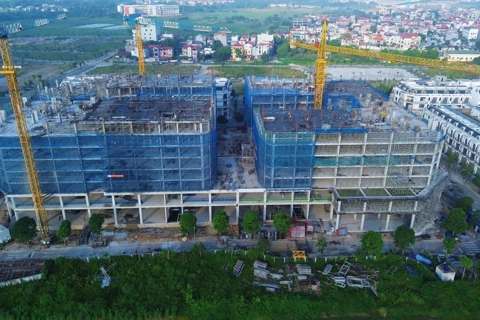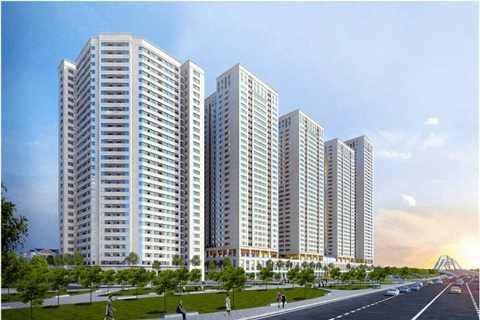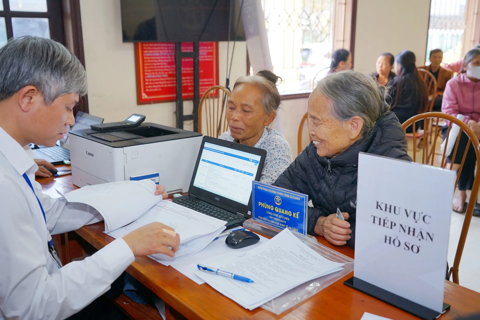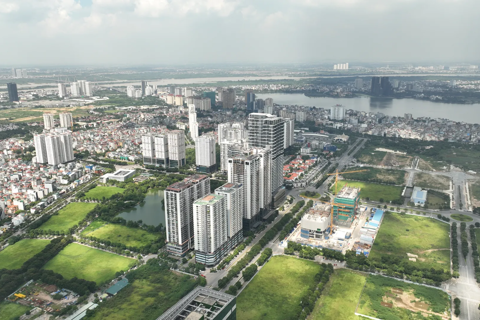Construction of US$8-4 billion railway project to start by mid-December
The more than 400-km railway, which will start at the border railway junction in Lao Cai and end at the Lach Huyen Port in Haiphong, is expected to get technical assistance from China.
THE HANOI TIMES — Prime Minister Pham Minh Chinh has called for urgent preparations for the groundbreaking ceremony of the Lao Cai-Hanoi-Haiphong railway project, scheduled for December 19.

The Vietnamese government is pushing ahead with several rail projects to bolster the connectivity of the country. Photo: Vietnam Railways
In a directive announced at a May 20 meeting between the prime minister and relevant ministries on the implementation of railway projects linking Vietnam and China, he highlighted technology transfer, reminding relevant agencies of transferring expertise in locomotive manufacturing and signaling systems.
In mid-February, the Lao Cai-Hanoi-Haiphong railway project got the National Assembly's approval for the investment policy with a total cost of VND203.231 trillion (US$8.37 billion).
On April 14, Vietnam and China signed an exchange letter agreeing on technical support for preparing the feasibility study of the Lao Cai–Hanoi–Haiphong standard-gauge railway.
The project is considered part of the railway connectivity cooperation outlined in the Vietnam–China joint statement, under which the Ministry of Foreign Affairs is tasked with promoting bilateral collaboration, while relevant ministries and localities are responsible for resolving technical, geological, land, and site clearance issues.
Deputy Prime Minister Tran Hong Ha has been tasked with assigning specific responsibilities to each ministry to ensure systematic implementation. The ministries are required to finalize the standards and specifications, determine the alignment of the railway, and share them with local authorities to start land clearance.
The project will be financed through various channels, including loans, bank credits, bonds, public investment, and public-private partnerships.
Meanwhile, human resources for the project will be trained through short, medium, and long-term training programs at three levels: technical workers, engineers, and PhDs.
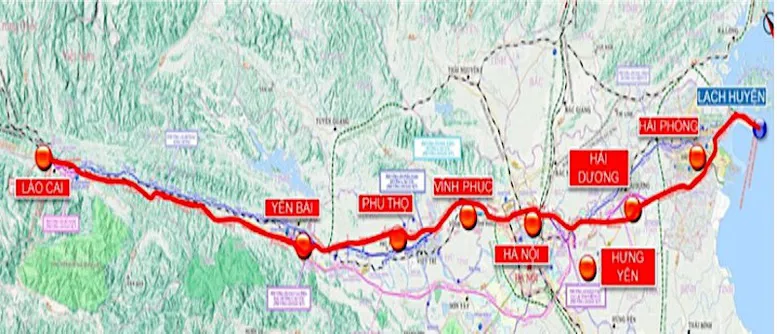
The route of the Lao Cai-Hanoi-Haiphong railway. Photo: Archive
The railway will cover nearly 391 km, with an additional 27.9 km of branch lines. It will pass through nine provinces and cities: Lao Cai, Yen Bai, Phu Tho, Vinh Phuc, Hanoi, Bac Ninh, Hung Yen, Hai Duong, and Haiphong.
The new single-track railway will be built with a standard gauge of 1,435 mm and will accommodate both passenger and freight traffic. Design speeds will be up to 160 km/h on the main line (from Lao Cai to South Haiphong station), 120 km/h through the Hanoi hub, and 80 km/h on other sections. The project is scheduled for completion by 2030.
According to the Ministry of Construction, the Lao Cai-Hanoi-Haiphong railway project has completed the determination of the alignment, station locations, and land clearance boundaries. Adjustments to the railway route have been surveyed, and provinces have set up land clearance steering committees.
At present, the government agencies are selecting consultants to prepare the environmental impact assessment (EIA), change the land use from forestry to project use, prepare cost estimates for the design consulting package, the feasibility study report, and financing estimates for discussion with international partners.
Other planned rail projects with China include the Hanoi-Dong Dang line (156 km, total investment of US$6 billion) and the Haiphong-Ha Long-Mong Cai line (187 km, total investment of US$7 billion), both of which are undergoing planning and pre-feasibility studies, as well as the development of necessary policies and investment mechanisms.




